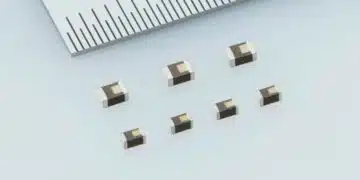Connector Designs
Soldering Quality
As per the IPC-A-610D, a compliant solder joint must fill at least 75% of the free volume between the pin...
Read moreDetailsSolder Reflow Practice
As noted previously, the THR reflow practice is basically identical to the SMT reflow practice. As such, it can be...
Read moreDetailsComponent Insertion
Whenever possible, it is desirable to use automatic pick and place technologies to insert the connectors into the PCB PTH....
Read moreDetailsPin Geometry
Basically, pins can be round or any rectangular shape, as shown in Figure 2.95. The pin geometry plays an important...
Read moreDetailsSolder Paste Application
The solder paste is applied to the PCB and a subsequent squeegee pass is used to push the paste into...
Read moreDetailsSolder Paste Volume
The solder paste volume on the PCB surface will be determined by the thickness and area of the stencil opening....
Read moreDetailsScreen Printing
The screen printing process is particularly important because it determines the amount of solder paste that will be applied to...
Read moreDetailsThe THR Manufacturing Process
The basic requirement of a THR manufacturing process is to ensure compatibility with the existing SMT manufacturing process, typical stages...
Read moreDetailsComponent Lead Terminations
In a lead-free world, the most common finish is tin because of its very good wettability properties. However, tin can...
Read moreDetailsContact Considerations
Design and material change are also necessary for contacts, particularly the termination end of contacts. THR compatibility places additional requirements...
Read moreDetails































